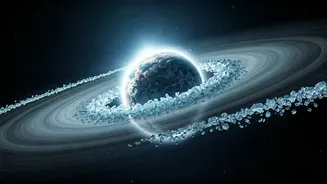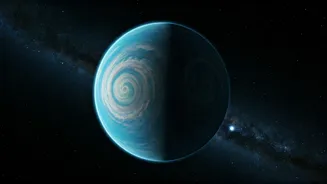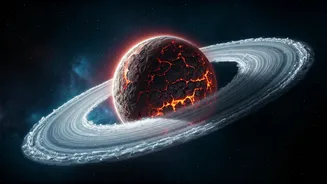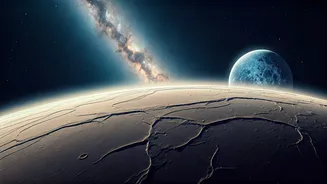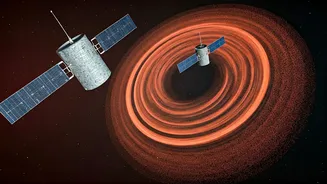Water's Planetary Birth
The conventional understanding was that a planet's water came from elsewhere, like icy asteroids that later impacted the young world. However, research
now suggests a planet can produce its own water during its formation. This groundbreaking concept alters how scientists look at planetary habitability. During the formation process, the material that coalesces to form planets may contain the elements that can react with each other and produce water. The exact mechanism involves chemical reactions in the planet-forming disk, where hydrogen and oxygen, present in the materials, can combine to create water molecules. This in-situ creation would be significant. It could make planets in a wider range of cosmic environments potentially habitable, irrespective of their initial conditions.
Expanding Habitable Zones
This discovery implies that the zone of habitability—the area around a star where conditions are right for liquid water—could be wider than previously assumed. If planets can produce their own water, they might be habitable even if they form in seemingly dry regions. Previously, astronomers considered a planet's distance from its star a primary factor in habitability because it determined the temperature necessary for liquid water. This new perspective acknowledges the importance of internal processes and chemistry in determining whether a planet can support life. The implications of this are significant. It broadens the scope of the search for extraterrestrial life, suggesting that potentially habitable planets could be found even in less expected places.
Formation Chemistry Revealed
The key to this new understanding is the chemical composition of the materials that form planets. The building blocks of a planet are often dusty particles and gases that surround a young star, known as the protoplanetary disk. The presence and distribution of hydrogen and oxygen within these materials are crucial. During a planet's formation, these atoms are subjected to various conditions like high temperatures, pressures, and the effects of stellar winds. These factors drive the chemical reactions that can cause hydrogen and oxygen to bond, creating water. This in-situ water production is not just a scientific curiosity; it is a fundamental aspect of how planets come to possess the resources necessary to support life. This research unveils the complex interplay of chemical processes that might play a role in making a planet habitable.
Implications for Life
The potential to generate water internally directly impacts the search for life beyond Earth. It suggests that a planet's water supply doesn't solely depend on external sources like icy asteroids, increasing the likelihood that many worlds have water. This raises the possibility that water-rich planets are common, creating more environments where life could emerge. Furthermore, the findings are essential for future space missions. They indicate that even planets in systems once considered unsuitable for life might merit further investigation. Instruments that can detect traces of water, even in unexpected places, could provide crucial insights into whether a planet has the capacity to support life. This novel research enhances the optimism surrounding the search for habitable planets, making the endeavor much more exciting and fruitful.
Future Research Pathways
The field of planetary science has new, intriguing avenues for exploration due to the discovery. Future research will likely focus on precisely modelling the chemical reactions involved in water production during planetary formation. Scientists aim to refine their computer simulations, considering factors such as the composition of the protoplanetary disk, the role of stellar radiation, and the impact of planetary accretion. Further studies might examine the atmospheres of exoplanets for evidence of water created in situ. Telescopes like the James Webb Space Telescope and future instruments will be crucial in gathering data. The detailed composition and characteristics of exoplanet atmospheres could provide direct clues about the presence of water and the potential for life. This ongoing investigation has the potential to transform the comprehension of planetary formation and the possibilities for life in the universe.
